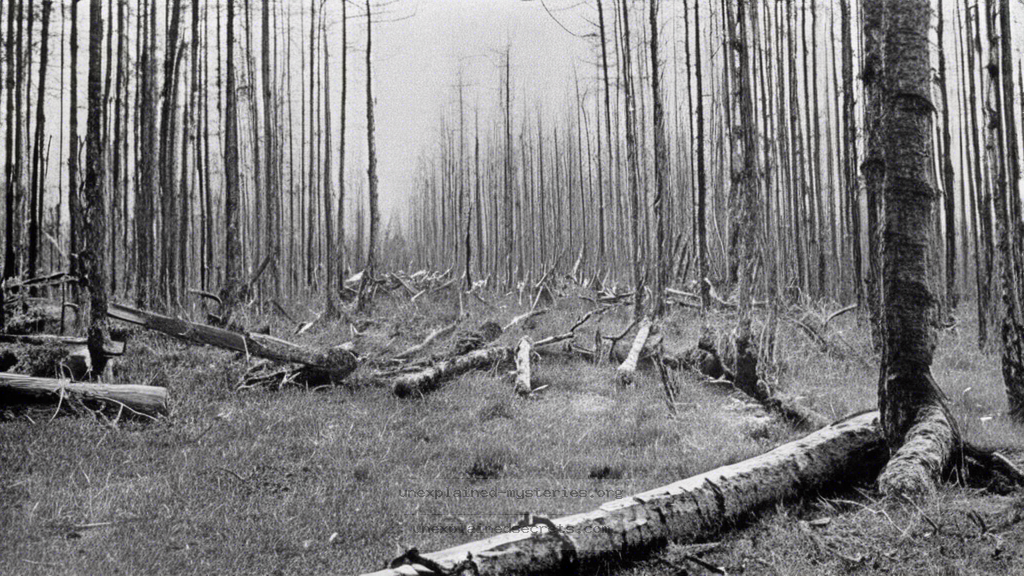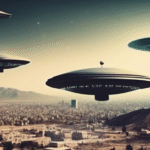What Causes the Unexplained Anomalies of the Tunguska Event?
What Causes the Unexplained Anomalies of the Tunguska Event?
The Tunguska Event of 1908 remains one of the most compelling unexplained mysteries in scientific history. It involved a massive explosion that occurred near the Tunguska River in Siberia, Russia, flattening an estimated 2,000 square kilometers of forest. Given that no impact crater was found, the cause of the explosion has perplexed scientists for over a century. Understanding this event is crucial not only for unraveling its mysteries but also for assessing the potential risks posed by similar phenomena in the future. In this post, we’ll explore the various theories surrounding the Tunguska Event, its historical context, core concepts, and the ongoing research that aims to uncover the truth behind this scientific anomaly.
Historical Context: A Day Like No Other
The Tunguska Event took place on June 30, 1908, early in the morning. Witnesses reported seeing a bright flash in the sky, followed by a series of loud explosions that shook homes and shattered windows over 600 miles away. The aftermath revealed a vast area of flattened trees, leading to immediate speculation about what could have caused such destruction. Due to its remote location, the event went largely unexamined until expeditions began in the 1920s.
During these early investigations, scientists and journalists alike entertained various theories—ranging from meteor impacts to volcanic activity. However, the absence of a crater led to further speculation, and the Tunguska Event quickly became a topic of intrigue within both scientific and popular culture.
Core Concepts: The Explosion and Its Effects
At its core, the Tunguska Event represents a powerful explosion that released energy equivalent to around 10-15 megatons of TNT. To put this into perspective, this is roughly 1,000 times more powerful than the atomic bomb dropped on Hiroshima. The explosion created a shockwave that knocked down trees and caused significant atmospheric disturbances. The following table summarizes the key effects of the event:
| Effect | Description |
|---|---|
| Destruction Radius | Flattened approximately 80 million trees over 2,000 square kilometers. |
| Shockwave | Felt as far away as Europe, comparable to a 5.0 magnitude earthquake. |
| Atmospheric Changes | Brighter nights and unusual sunsets recorded in several parts of the world. |
The Meteorite Hypothesis: A Leading Theory
One of the earliest theories proposed was that a meteor or comet exploded in the atmosphere, releasing energy and causing the devastation observed. This hypothesis gained traction because it explained the absence of a crater—if a meteor exploded in the air, the shockwave could easily cause massive destruction without leaving a noticeable impact site.
In the 1950s, scientists like the Soviet researcher Leonid Kulik organized expeditions to the site, examining tree falls and soil samples. The findings supported the idea that a cosmic body had indeed exploded in the atmosphere, likely at an altitude of 5-10 kilometers. However, the lack of physical remnants of the meteorite raised further questions.
Alternative Theories: Beyond Meteorites
While the meteorite hypothesis remains popular, several alternative theories have surfaced over the years. These include:
- Natural Gas Explosion: Some researchers suggested that a massive release of methane gas from underground could have ignited, causing the explosion.
- Antimatter Reaction: A more fringe theory posits that a small antimatter body collided with Earth, resulting in a catastrophic explosion.
- Nuclear Test: Conspiracy theories have emerged suggesting that the event was a result of secret nuclear testing, although no evidence supports this claim.
Scientific Investigations: The Quest for Answers
Numerous scientific investigations have taken place since the Tunguska Event, with researchers employing various techniques to analyze the area. Notable efforts include:
- Tree Ring Analysis: Studies have examined tree rings in the affected area to determine the precise date and environmental impact of the explosion.
- Soil Samples: Soil samples analyzed for chemical residues related to cosmic impacts have yielded inconclusive results, complicating the meteorite theory.
- Remote Sensing: Modern technology, including satellite imagery, has helped map the affected area and analyze vegetation recovery over time.
Common Misconceptions: Separating Fact from Fiction
As with many mysteries, the Tunguska Event has been surrounded by misconceptions. For example, many people believe that it directly caused widespread human casualties, but in reality, there were no confirmed fatalities or injuries due to the remote location of the explosion. Additionally, some sensationalized accounts have described the phenomenon as a “UFO landing” or “alien weapon test,” neither of which has credible scientific backing.
Understanding these misconceptions is crucial for fostering informed discussions around the event and preventing the spread of misinformation.
Practical Implications: Lessons Learned from Tunguska
The Tunguska Event serves as a significant case study in planetary defense and risk assessment regarding potential asteroid or comet impacts on Earth. Some practical implications include:
- Monitoring Near-Earth Objects (NEOs): The need for continuous monitoring of NEOs has grown, with initiatives such as NASA’s Planetary Defense Coordination Office established to track potential threats.
- Public Awareness and Preparedness: The event highlights the importance of public awareness campaigns regarding the potential dangers posed by cosmic impacts.
- International Collaboration: Global cooperation among countries for tracking and potentially deflecting asteroids is imperative for planetary safety.
Future Developments: Ongoing Research and Exploration
As technology advances, research into the Tunguska Event continues to evolve. Future developments may include:
- Advanced Modeling Techniques: Utilizing simulations to model the explosion and its effects with greater accuracy.
- New Expedition Opportunities: With modern technology, future expeditions could yield new findings in the Tunguska region, especially as climate change affects the landscape.
- Interdisciplinary Approaches: Collaborations among various scientific fields may provide novel insights into the event and its implications.
Conclusion: The Legacy of the Tunguska Event
The Tunguska Event remains an enigmatic occurrence that continues to captivate scientists and enthusiasts alike. While the meteorite hypothesis stands as the most widely accepted explanation, the absence of definitive evidence keeps the door open for alternative theories. Ongoing research not only seeks to uncover the truth behind this historical mystery but also aims to enhance our understanding of planetary defense against potential cosmic threats.
By examining the Tunguska Event, we gain insights not only into the past but also into the future, reminding us of the delicate balance we maintain with the cosmos. As we explore this scientific anomaly, we are compelled to remain vigilant, prepared, and curious about the mysteries that lie beyond our planet.
Other Articles
Recent Posts
- What Happened to Flight MH370? The Conspiracy Theories That Still Haunt Us
- What Secrets Lurk Within the Walls of the Infamous Trans-Allegheny Lunatic Asylum?
- What Evidence Supports the Existence of Bigfoot in the Pacific Northwest?
- What Happened to the Indus Valley Civilization? Unraveling the Mysteries of Ancient Urban Life
- Can Telepathy Be Scientifically Proven Through Laboratory Evidence?







